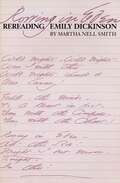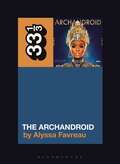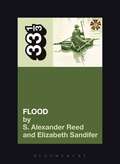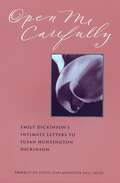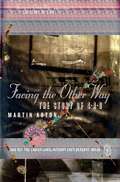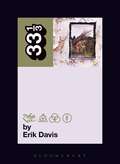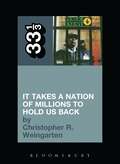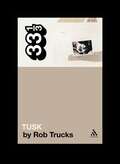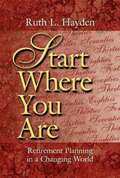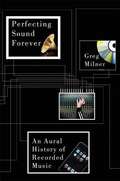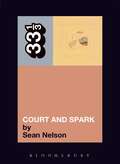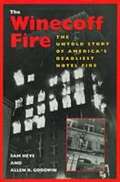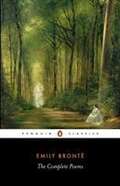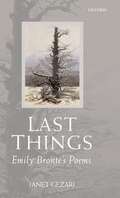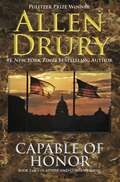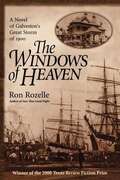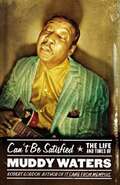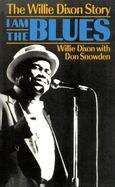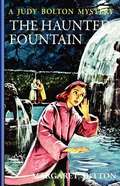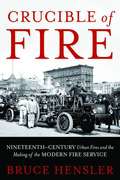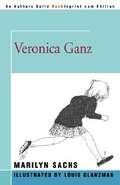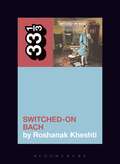- Table View
- List View
Rowing in Eden: Rereading Emily Dickinson
by Martha Nell SmithEmily Dickinson wrote a "letter to the world" and left it lying in her drawer more than a century ago. This widely admired epistle was her poems, which were never conventionally published in book form during her lifetime. Since the posthumous discovery of her work, general readers and literary scholars alike have puzzled over this paradox of wanting to communicate widely and yet apparently refusing to publish. In this pathbreaking study, Martha Nell Smith unravels the paradox by boldly recasting two of the oldest and still most frequently asked questions about Emily Dickinson: Why didn't she publish more poems while she was alive? and Who was her most important contemporary audience? Regarding the question of publication, Smith urges a reconception of the act of publication itself. She argues that Dickinson did publish her work in letters and in forty manuscript books that circulated among a cultured network of correspondents, most important of whom was her sister-in-law, Susan Huntington Gilbert Dickinson. Rather than considering this material unpublished because unprinted, Smith views its alternative publication as a conscious strategy on the poet's part, a daring poetic experiment that also included Dickinson's unusual punctuation, line breaks, stanza divisions, calligraphic orthography, and bookmaking - all the characteristics that later editors tried to standardize or eliminate in preparing the poems for printing. Dickinson's relationship with her most important reader, Sue Dickinson, has also been lost or distorted by multiple levels of censorship, Smith finds. Emphasizing the poet-sustaining aspects of the passionate bonds between the two women, Smith shows that theirrelationship was both textual and sexual. Based on study of the actual holograph poems, Smith reveals the extent of Sue Dickinson's collaboration in the production of poems, most notably "Safe in Their Alabaster Chambers". This finding will surely challenge the popular conception of the isolated, withdrawn Emily Dickinson. Well-versed in poststructuralist, feminist, and new textual criticism, Rowing in Eden uncovers the process by which the conventional portrait of Emily Dickinson was drawn and offers readers a chance to go back to original letters and poems and look at the poet and her work through new eyes. It will be of great interest to a wide audience in literary and feminist studies.
Janelle Monáe's The Archandroid (33 1/3 #159)
by Alyssa FavreauIn Janelle Monáe's full-length debut, the science fiction concept album The ArchAndroid, the android Cindi Mayweather is on the run from the authorities for the crime of loving a human. Living in 28th century Metropolis, Cindi fights for survival, soon realizing that she is in fact the prophesied ArchAndroid, a robot messiah meant to liberate the masses and lead them toward a wonderland where all can be free. Taking into account the literary merit of Monáe's astounding multimedia body of work, the political relevance of the science fictional themes and aesthetics she explores, and her role as an Atlanta-based pop cultural juggernaut, this book explores the lavish world building of Cindi's story, and the many literary, cinematic, and musical influences brought together to create it. Throughout, a history of Monáe's move to Atlanta, her signing with Bad Boy Records, and the trials of developing a full-length concept album in an industry devoted to the production of marketable singles can be found, charting the artist's own rise to power. The stories of Monáe and of Cindi are inextricably entwined, each making the other more compelling, fantastical, and deeply felt.
They Might Be Giants' Flood (33 1/3 Ser. #88)
by S. Alexander Reed Elizabeth SandiferFor a few decades now, They Might Be Giants’ album Flood has been a beacon (or at least a nightlight) for people who might rather read than rock out, who are more often called clever than cool. Neither the band’s hip origins in the Lower East Side scene nor Flood’s platinum certification can cover up the record’s singular importance at the geek fringes of culture. Flood’s significance to this audience helps us understand a certain way of being: it shows that geek identity doesn’t depend on references to Hobbits or Spock ears, but can instead be a set of creative and interpretive practices marked by playful excess—a flood of ideas. The album also clarifies a historical moment. The brainy sort of kids who listened to They Might Be Giants saw their own cultural options grow explosively during the late 1980s and early 1990s amid the early tech boom and America’s advancing leftist social tides. Whether or not it was the band’s intention, Flood’s jubilant proclamation of an identity unconcerned with coolness found an ideal audience at an ideal turning point. This book tells the story.
Open Me Carefully: Emily Dickinson's Intimate Letters to Susan Huntington Dickinson
by Emily Dickinson Martha Nell Smith Ellen Louise HartFor the first time, selections from Emily Dickinson's thirty-six year correspondence to her neighbor and sister-in-law, Susan Huntington Dickinson, are compiled in a single volume. Open Me Carefully invites a dramatic new understanding of Emily Dickinson's life and work, overcoming a century of censorship and misinterpretation. This remarkable correspondence brings to light Susan Huntington Dickinson as the central source of the poet's passion and inspiration, and as her primary reader and literary companion. Gone is Emily as the precious recluse spinster of Amherst. Here is Dickinson in her own words—humorous, playful, passionate, and fully alive.
Facing the Other Way: The Story of 4AD
by Martin AstonFACING THE OTHERWAY: THE STORY OF 4AD is the first comprehensive account of the iconic record label. Drawing on over a hundred interviews with the label’s menagerie of artists and staff, music writer and 4AD aficionado Martin Aston follows the course of the label’s defining years; initially populated by the likes of Bauhaus, The Birthday Party, Cocteau Twins, This Mortal Coil and Dead Can Dance, each band resembled a new genre on its own, before 4AD embarked on a new era with a wealth of equally startling American signings, including Throwing Muses, Pixies and The Breeders. Yet for every artistic triumph, there was a backlash. Behind the scenes, an accumulation of feuds and enforced commercial compromises in the wake of alternative music’s invasion of the mainstream left 4AD adrift and Watts-Russell a broken man, soon to sever all ties with the music industry, including his beloved label. This definitive history explains why 4AD has been called the greatest independent label of all time, one of the most influential, and certainly the most collectable. The story of 4AD is an unparalleled drama from a pivotal phase in independent music culture.
Led Zeppelin's Led Zeppelin IV (33 1/3 #17)
by Erik DavisStripping their famous name off the record was Led Zeppelin’s almost petulant attempt to let their Great Work stand on its own two feet. But the wordless jacket also lent the album charisma. Fans hunted for hidden meanings, or, in failing to find them, sensed a strange reflection of their own mute refusal to communicate with the outside world. This helped to create one of the supreme paradoxes of rock history: an esoteric megahit, a blockbuster arcanum....
Public Enemy's It Takes a Nation of Millions to Hold Us Back (33 1/3 Ser. #71)
by Christopher R. WeingartenChristopher R. Weingarten provides a thrilling account of how the Bomb Squad produced such a singular-sounding record: engineering, sampling, scratching, constructing, deconstructing, reconstructing—even occasionally stomping on vinyl that sounded too clean. Using production techniques that have never been duplicated, the Bomb Squad plundered and reconfigured their own compositions to make frenetic splatter collages; they played samples by hand together in a room like a rock band to create a “not quite right” tension; they hand-picked their samples from only the ugliest squawks and sirens.
Fleetwood Mac's Tusk (33 1/3 Ser. #77)
by Rob TrucksAfter Rumours became the best-selling single album of all-time, Fleetwood Mac asked Warner Brothers Records to buy them a studio (the label refused, costing both Warner Brothers and the band significant cash in the long run) and then handed the reins to their guitarist and resident perfectionist Lindsey Buckingham, a fusion of factors that led Tusk to become the first record in history to cross the million dollar threshold in production costs. “You know,” Buckingham told me, “we had this ridiculous success with Rumours. And at some point, at least in my perception, the success of that detached from the music, and it was more about the phenomenon. We were poised to do another album, and I guess because the axiom 'If it works, run it into the ground’ was prevalent then, we were probably poised to do Rumours II. I don’t know how you do that, but somehow my light bulb that went off was, ‘Let’s just not do that. Let’s very pointedly not do that.’” Here, Rob Trucks talks to Lindsey Buckingham, as well as members of Animal Collective, Camper Van Beethoven, the New Pornographers, Wolf Parade, the Fleetwood Mac tribute band. Tusk, and the USC Trojan marching band in order to chart both the story and the impact of an album born of personal obsession and a stubborn unwillingness to compromise.
Start Where You Are: Retirement Planning in a Changing World
by Ruth L. HaydenStart where You Are is a delight to read. It’s like sitting down with Ruth and carrying on a warm, lively conversation about ways to transform dreams into reality and bring balance into life, and to take control of our finances. Ruth offers plenty of sensible, no nonsense advice for managing money through the ages. But her passion is helping you create a vision and a realistic plan for achieving the kind of life you want, especially during your later years. Do you want to start mapping out your blueprint for a good retirement? Then I highly recommend Start Where You Are. Chris Farrell, host of Public Television’s Right on the Money and Public Radio’s Sound Money Far from another personal finance tome, Ruth Hayden's book is an inspiring and highly entertaining guide to planning for the rest of your life, however long that may be. While it offers clear guidance in terms of helping readers understand how much money they’ll need in retirement and how to make it last, it goes far beyond that—provoking us to think about what we really want for our lives. The real-life stories she relates make this a very readable hook. Gerri Detweiler, consumer advocate and author of The Ultimate Credit Handbook
Perfecting Sound Forever: An Aural History of Recorded Music
by Greg MilnerIN 1915, THOMAS EDISON PROCLAIMED THAT HE COULD RECORD A LIVE PERFORMANCE and reproduce it perfectly, shocking audiences who found themselves unable to tell whether what they were hearing was an Edison Diamond Disc or a flesh-and-blood musician. Today, the equation is reversed. Whereas Edison proposed that a real performance could be rebuilt with absolute perfection, Pro Tools and digital samplers now allow musicians and engineers to create the illusion of performances that never were. In between a century of sonic exploration into the balance between the real and the represented! Tracing the contours of this history,-Greg Milner fakes us through the major breakthroughs and glorious failures in the art and science of recording. An American soldier monitoring Nazi radio transmissions stumbles onto the open yet revolutionary secret of magnetic tape, Japanese and Dutch researchers build a first-generation digital audio format and watch as their "compact disc” is marketed by the music industry as the second coming of Edison yet derided as heretical by analog loyalists. The music world becomes addicted to volume in the nineties and fights a self-defeating "loudness war" to get its fix. From Les Paul to Phil Spector to King Tubby, from vinyl to pirated CDs to iPods, Milner pulls apart musical history to answer a crucial question: Should a recording document reality as faithfully as possible, or should it improve upon or somehow transcend the music it records? The answers he uncovers will change the very way we think about music.
Joni Mitchell's Court and Spark (33 1/3 Ser. #40)
by Sean NelsonIt’s a sucker bet to try and argue that Blue, or For 2 the Roses, or The Hissing of Summer Lawns are better or worse albums than Court and Spark, or than one another. In a certain way, they all feel like one sustained burst of musical endeavor from an artist who had only just begun to understand what she was capable of—and before she had decided to leave that strength behind in search of new powers. Still, Court and Spark is such a clear turning point, not just in terms of its popularity, but in terms of its approach. It represents a perfect example of an artist reaching out to a wide audience without pandering to it, in what feels, more than three decades on, like an honest attempt to say as much as possible to as many people as possible.
Maudie and Me and the Dirty Book
by Betty MilesEleven-year-old Kate’s ordinary life in a small Massachusetts town becomes quite extraordinary when she becomes involved with Maudie Schmidt and an inter-school reading project. Presents a provoking portrait of censorship and its effects.
The Seeing Summer
by Jeannette Eyerly Emily Arnold McCullyMore than anything else Carey wants a new ten-year-old playmate to replace the friend who had moved away. When she hears that the new family next door has a girl her own age, Carey straightens her room and settles down to watch and wait. She is stunned to learn that her new young neighbor is blind and carries a white cane. Not fair! Jenny will not be able to do everything Carey can do. But Carey is in for a surprise—Jenny can cook, play games, read her own books, and run outdoors like everyone else. When two thugs kidnap Jenny for a high ransom, Carey tracks them down and becomes a second captive. Together the girls keep up their courage and use their ingenuity to survive the terrifying adventure. The Seeing Summer is a story of capture and escape, but best of all it is a story of friendship between two ten-year-olds who are very much alike, even though one cannot see.
The Winecoff Fire: The True Story of America's Deadliest Hotel Fire
by Allen Goodwin Sam HeysAlmost a half-century later, the question still persists: accident or arson? As America slept in the predawn hours of December 7, 1946—in preparation for a somber remembrance of the fifth anniversary of Pearl Harbor Day—280 of its citizens awoke suddenly in a hotel already burning wildly out of control. For the next two and a half hours, they would fight their own war, mostly against their own surging, unrelenting fear. Like the “unsinkable” Titanic, Atlanta’s Winecoff Hotel had been billed as "fireproof.” And, in fact, it was. The hotel did not burn. Its guests did. Or they died on the sidewalk of Peachtree Street, or in quiet clusters, huddled together for courage against the silent, suffocating smoke. It was the worst hotel fire ever, anywhere. The fact that today it is still the worst hotel fire in North America—and second worst in the world—is testament to its horror. One hundred nineteen people died. The rest survived by extraordinary heroism or blind luck. This is their story—all of them, the dead and the lucky—a story of ordinary lives colliding with catastrophe, a moment frozen in time. And a story of an investigation that went awry.
Emily Jane Brontë: The Complete Poems (Classics Ser.)
by Emily Brontë Janet GezariFor this new edition Janet Gezari has arranged the poems as nearly as possible in chronological order of composition, printing the published texts of the 1846 poems but otherwise taking the most recent manuscript versions. She also provides a scholarly introduction and extensive textual and contextual annotations to the poems.
Capable of Honor (Advise and Consent #3)
by Allen DruryFirst published in 1966. It is one of the most fundamental questions facing America today: How justifiably, or irresponsibly, do the volatile and unbiased American media—press, television and radio—attempt to interfere with, and control, the political process and the foreign policy of the nation? In a hotly fought Presidential primary, the news media fractures along ideological lines, supporting and distorting the candidates’ records, manipulating the news rather than covering it. Capable of Honor, the third novel in the grand, bestselling Advise and Consent saga, is a compelling blockbuster that shines a harsh and revealing spotlight on how the media shapes the news, guides public opinion, creates policy—and tries to shape history itself. FROM THE MASTER OF SPELLBINDING POLITICAL FICTION, AUTHOR OF ADVISE AND CONSENT.
The Windows of Heaven: A Novel of Galveston's Great Storm of 1900
by Ron RozelleSet in Galveston during the 1900 storm, the most devastating natural disaster in the history of the United States, this sweeping novel follows the fates of several richly drawn characters. It is the story of Sal, the little girl who is wise beyond her years and who holds out as much hope for the world as she does for her father, the ruined son of a respected father. It is the story of Sister Zilphia, the nun who helps run the St. Mary's Orphanage. The only thing separating the two long buildings of the orphanage is a fragile line of sand dunes; the only thing separating Zilphia from the world is the brittle faith that she has been sent there to consider. A faith that has never been truly tested. Until now. And it is the story of Galveston herself, the grand old lady of the Gulf Coast, with her harbor filled with ships from the world over; her Victorian homes and her brothels and her grand pavilions set in their own parks; and her stately mansions along Broadway, the highest ground on the island, at eight feet above sea level. All must face their darkest night now, as nature hurls the worst she can muster at the narrow strip of sand and saltgrass that is doomed to become, for a time, part of the ocean floor. This is the story of heroes and villains, of courage and sacrifice and, most of all, of people trying desperately to survive. And it is the story of an era now gone, of splendor and injustice, filled with the simple joy of living.
Can't Be Satisfied: The Life And Times Of Muddy Waters
by Robert GordonThe definitive biography of the most influential blues musician of them all. In a nutshell: no Muddy Waters, no Rolling Stones. ‘Can’t Be Satisfied is that rare thing in musical biographies: a book that maps out not just a single, extraordinary life but the cultural forces that shaped it.
I am the Blues: The Willie Dixon Story
by Willie DixonI Am The Blues captures Willie Dixon's inimitable voice and character as he tells his life story: the segregation of Vicksburg, Mississippi, where Dixon grew up, the prison farm from which he escaped and then hoboed his way north as a teenager, his equal-rights-based draft refusal in 1942, his work--as songwriter, bassist, producer, and arranger--with Muddy Waters, Howlin' Wolf, Little Walter, Bo Diddley, and Chuck Berry which shaped the definitive Chicago blues sound of Chess Records: and his legal battles to recapture the rites to his historic catalog of songs. Don Snowden has supplemented Dixon's reflections with interviews with other performers and Chess insiders. In the Appendixes, Snowden gives a comprehensive discography and a list of the major artists who have recorded Dixon's songs.
Black Lesbians: An Annotated Bibliography
by Jr RobertsPublished in 1981, this groundbreaking work is a noteworthy landmark in the history of women's studies, African-American studies, and lesbian and gay studies. The 341 primary bibliographic entries, each one accompanied by an informative annotation, made available a vast body of work about the lives of Black lesbians. Entries cover six primary areas of study: "Lives and Lifestyles"; "Oppression, Resistance, and Liberation"; "Literature and Criticism"; "Music and Musicians"; "Periodicals"; and "Research, Reference, and Popular Studies." Also includes photographs and appendices.
The Haunted Fountain (Judy Bolton Mysteries Series #28)
by Margaret Sutton Pelagie DoaneJudy and Blackberry are at it again! Unwittingly while trying to help Lorraine, they stumble onto a mystery shrouded by memories of Judy visiting the Brandt estate as a teenager with her grandmother. But when she and her brother, Horace, return the next day to do some light investigating, in trying to avoid some dodgy characters, they instead find themselves underground and trapped in tunnels soon flooding. While investigating some distant moaning, they realize they are trapped underneath the fountain and surrounding pool and only Blackberry, Judy’s ever-faithful cat, can help them! Can Blackberry deliver a message to the outside world and help them expose a deadly jewel theft gang?
Crucible of Fire: Nineteenth-Century Urban Fires and the Making of the Modern Fire Service
by Bruce HenslerUrban conflagrations, such as the Great Chicago Fire of 1871 and the Great Boston Fire the following year, terrorized the citizens of nineteenth century American cities. However, urban rebirth in the aftermath of great fires offered a chance to shape the future. Ultimately residents and planners created sweeping changes in the methods of constructing buildings, planning city streets, engineering water distribution systems, underwriting fire insurance, and fire fighting itself. Crucible of Fire describes how the practical knowledge gained from fighting nineteenth-century fires gave form and function to modern fire protection efforts. Changes in materials and building design resulted directly from tragedies, such as fires in supposedly fireproof hotels. Thousands of buildings burned, millions of dollars were lost, the fire insurance industry faltered, and the nature of volunteerism changed radically before municipal authorities took the necessary actions. The great fires formed a crucible of learning for firefighters, engineers, architects, underwriters, and citizens. Veteran firefighter Bruce Hensler shows how the modern American fire service today is a direct result of the lessons of history and examines the efficacy of volunteerism in fighting fires. Crucible of Fire is an eye-opening look at today’s fire service and a thorough examination of what firefighters, civic leaders, and ordinary citizens can do to protect their homes and communities from the mistakes of the past. BRUCE HENSLER has thirty-four years of firefighting experience and degrees in fire science and public administration. His range of experience includes urban and suburban fire departments, as well as senior positions as a chief fire officer and deputy director of fire service training. A fire service and public policy analyst, he is also a paid-call fire officer for Rockport, Maine.
Veronica Ganz
by Marilyn SachsFirst published in 1968. One of the most famous bullies in children's books, Veronica Ganz has never met her match. She has systematically beaten up everybody in all of the classes, and has never been challenged until ... until little Peter Wedemeyer moves into the neighborhood. Taunting, teasing and always one step ahead of her mighty fists, Veronica must find a way to teach him who is boss.
Wendy Carlos's Switched-on Bach (33 1/3 Ser. #141)
by Roshanak KheshtiSo much, popular and scholarly, has been written about the synthesizer, Bob Moog, and his brand-name instrument-and even Wendy Carlos, the musician who made this instrument famous. No one, however, has examined the importance of spy technology, the Cold War, and gender to this critically important innovation. What is the relationship between synthesizers, electronic music, and world politics? These unlikely correlations form the backdrop to Roshanak Kheshti's inquiry into Wendy Carlos's award-winning album. Through a postcolonial, feminist science and technology studies perspective, Kheshti explores the importance of Carlos's first album to synthesizer technology, home studio design, and sound color orchestration. She further examines the jockeying among world powers for status within an electronic music race akin to the Space Race of the same era. By focusing on Switched-On Bach (the highest-selling classical music recording of all time), this book examines the gendering of sound over the course of the twentieth century. Roshanak Kheshi is Associate Professor of Ethnic Studies and affiliate faculty in the Critical Gender Studies Program at the University of California, San Diego, USA.
